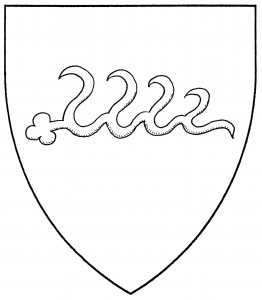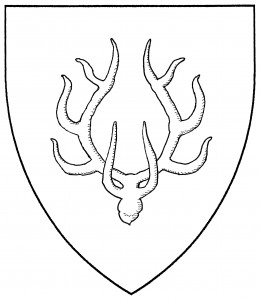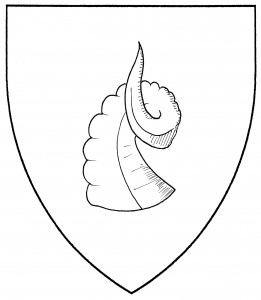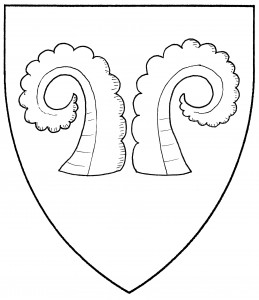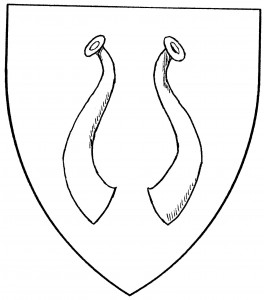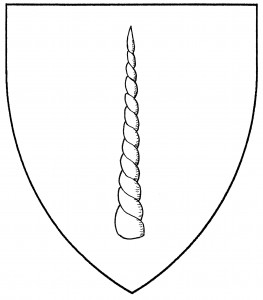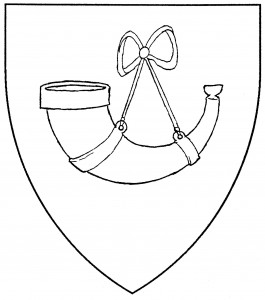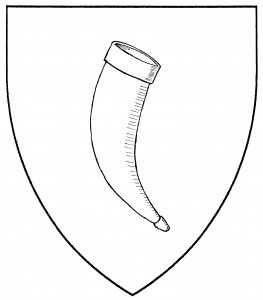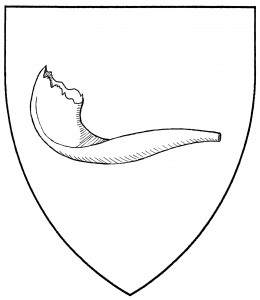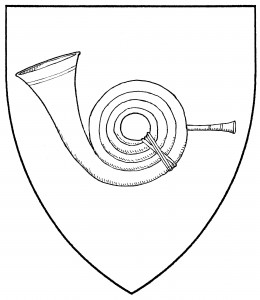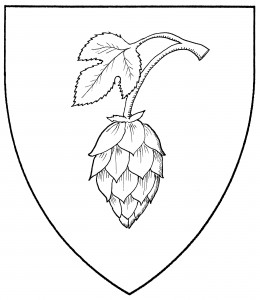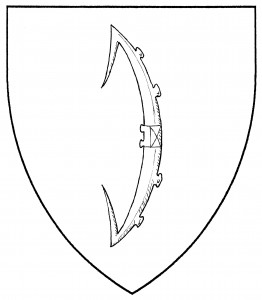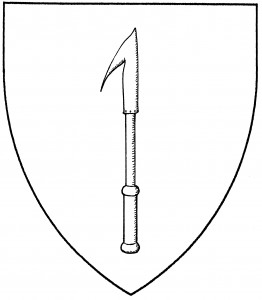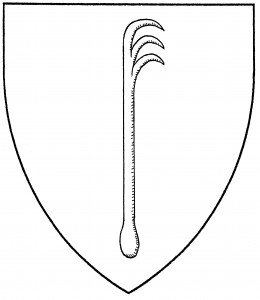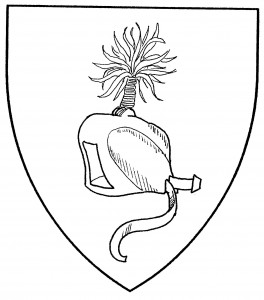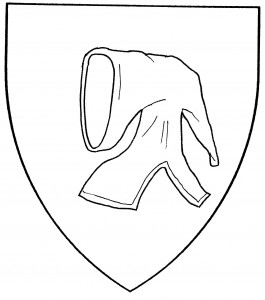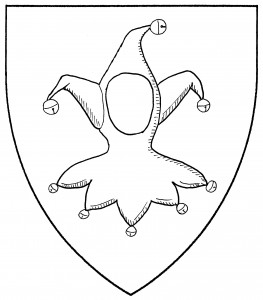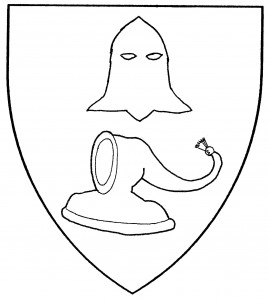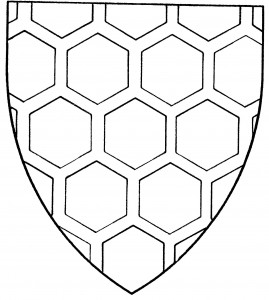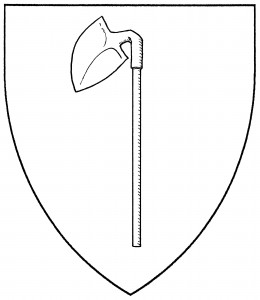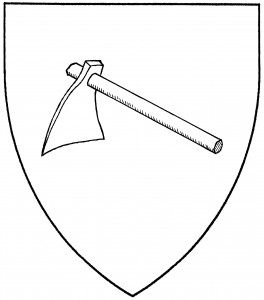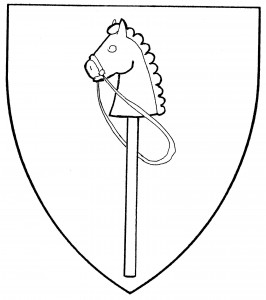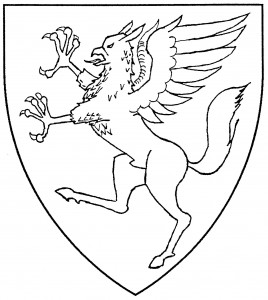An animal’s horn is a hard, pointed projection that grows from certain animals’ heads. The type of animal must be specified in the blazon. The most common forms in medieval armory are deer’s horns, ram’s and goat’s horns, and bull’s horns, each discussed below.
Deer’s horns, or antlers, have special terms to describe them. A single deer’s antler is termed its “attire”, and is found in German heraldry as early as c.1275, in the arms of the Counts of Württemberg [ANA2 476]. Its default orientation is fesswise, with the stump to dexter, but there are numerous period examples of a deer’s attire in other orientations, or even bent in a circle. The deer’s full rack of antlers may be termed a “deer’s attires”, or a “massacre”; if joined to a scrap of flesh, these may also be called a “deer’s scalp”. The set of attires is shown as found on a deer guardant: spread symmetrically with points to chief. The exact number of points is not blazoned, but left to the artist.
Ram’s horns are found in German armory as early as c.1340, in the arms of Frowenvelt or Frauenfeld [Zurich 136]. They could be depicted singly, or in pairs; when in pairs, they tended to be shown curving away from one another. A single ram’s horn could be oriented in one of several ways; the illustration is taken from the arms of von Widerspach, 1605 [Siebmacher 82]. Goat’s horns were drawn very similar to ram’s horns, but tended to have less curl, as in the arms of Kotwitz von Aulenbach [Siebmacher 107].
Bull’s horns, or buffalo’s horns, are found in German crests as early as the 14th Century [Gelre], and as charges in the arms of von Pfiltz, 1605 [Siebmacher 51]. They are drawn in a highly stylized manner; indeed, the German stylization sometimes caused the charge to be blazoned by French and English heralds as “elephant’s trunks”! Horns that are intended to be drawn more naturalistically would be better blazoned “cow horns”, the English practice. Society armory also has an example of a “bison’s massacre”, two short horns issuant from a scalp, as seen in the arms of von Sachsennhein, 1415 [Conz.Const. clxxx].
Of horns unique to the Society, the most common is the “unicorn’s horn” or “alicorn” (also sometimes blazoned a “narwhal’s horn” or “narwhal’s tooth”). No period examples have been found of it as a separate, independent charge. The unicorn’s horn is palewise, point to chief, by Society default.
Andreas Lucernensis bears: Per pale argent and sable, in pale three stag’s attires reversed gules.
Guinevere Whitehorn bears: Per bend azure and sable, a stag’s attires argent.
Hafr-Tóki bears: Sable, a stag’s antler in annulo conjoined to itself Or.
Ellen of Two Lines bears: Vert, a ram’s horn Or.
Angelica de Boullanger bears: Vert, a unicorn’s horn couped bendwise argent.
Otmar von Erhingen bears: Quarterly argent and sable, a pair of bull’s horns counterchanged.
